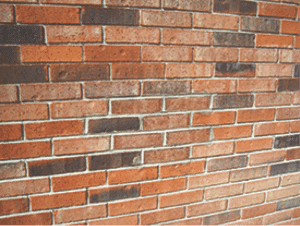Masonry staining utilizes a combination of art and science to produce a sheer, maintenance-free professional-grade stain to alter the color of masonry. Masonry stain can either lighten or darken, or change the color, of any masonry. The process of masonry staining is centuries old, beginning as a method of applying organic matter to whitewash masonry. This was done to remedy mismatches in coloration over time. Masonry staining has evolved to incorporate a combination of old-world and modern day practices. Color is still created by hand. The blending of color is done by eye and cannot be computer matched.
Which Masonry Can You Stain?
Masonry stain can be used on mortar, brick, block, concrete, natural and manufactured stone, cast stone, precast and tilt-up precast stone. Porous masonry that accepts water works best with professional-grade, water-based stains. Lithium-based stains penetrate deeper and bond chemically, so they are best for masonry like concrete. Some stains are made to reflect infrared light and lower energy costs.
How is Masonry Stain Applied?
Masonry stain is made so the color and texture will not fade or change over time. There are a variety of methods for masonry staining. While some stains that must be applied by brush, other stains allow for flexibility in the staining application to achieve different results.
Since masonry stain does not act as a layer, it allows masonry to breathe naturally. The surface of the masonry will not change as the stain is absorbed into the material.


Abbot Building Restoration has the expertise for any masonry project. For more information on masonry staining and masonry services, contact Abbot Building Restoration at 617-445-0274 or send us an email at info@abbotbuilding.com.


